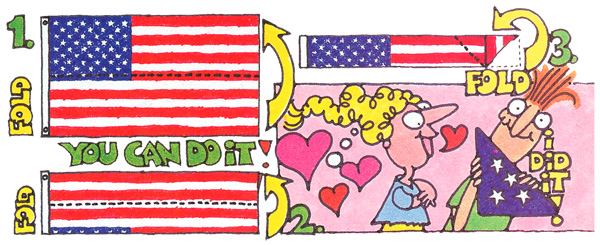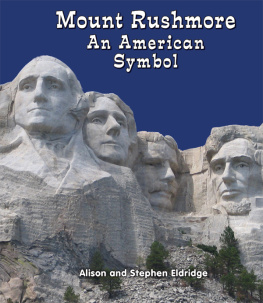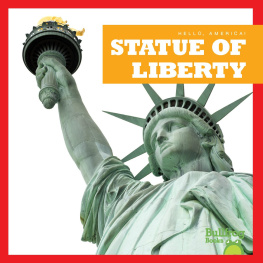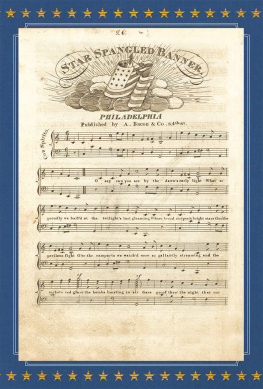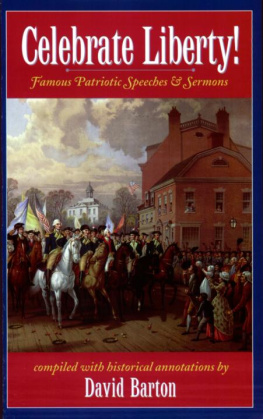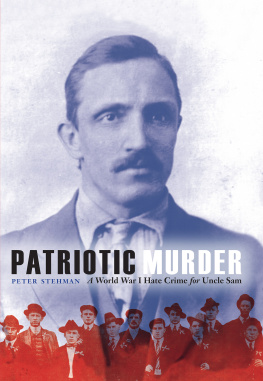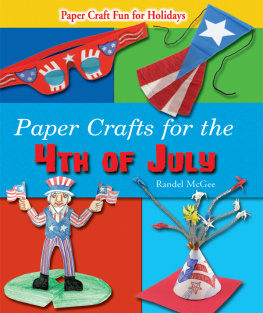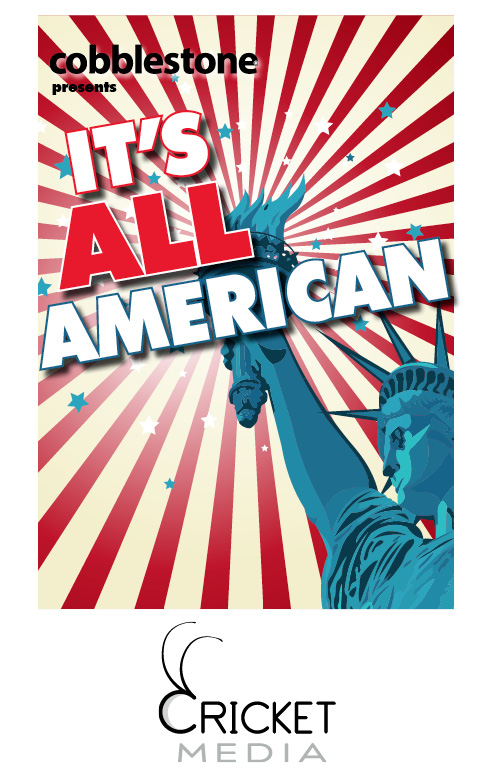What makes us American? What reminds us of our proud heritage? What patriotic symbols do we most closely associate with our national identity and culture? For some, the bald eagle is the classic American symbol. To others, the singing of the national anthem sparks the most national pride. Still others view national landmarks as places where our nations history is best kept alive and well. From mottoes to music, flags to famous figures, statues to historic sites, there are many ways that Americans have preserved our nations unique history and spirit. As you read this book, we think youll agree: Americans have a lot to be proud of!
Our Stars and Stripes, Forever!
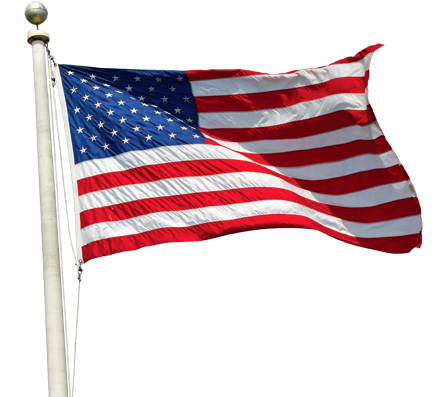
It is perhaps the most patriotic symbol of our country and one that is recognized around the world. But did you know that the design of the U.S. flag has changed over time to reflect our growing country?
For more than 100 years, Great Britains flags also represented the American Colonies. As the colonists moved toward open rebellion in the mid-1700s, however, they wanted a flag that symbolized them and their fight for representation.
The first Colonial flags were created to identify patriot ships at sea during the Revolutionary War. The colonists modified the British flag to create the Continental Colors (or Congress Colors), which today is referred to as the Grand Union flag. The red field of the British Red Ensign flag was replaced with rebellious stripes of red and white, symbolizing the 13 Colonies, while the small version of the British Union flag in the upper left-hand corner, symbolizing the Colonies connection to Great Britain, remained. Other Colonial flags included a pine tree, a beaver, or a rattlesnake. Mottoes, such as Liberty and Dont Tread on Me, often were added to these flags.
On June 14, 1777, the Second Continental Congress passed several marine laws. One stated, Resolved, That the flag of the United States be thirteen stripes, alternate red and white: that the union be thirteen stars, white in a blue field, representing a new constellation.
It was official. A field, or canton, of stars replaced the British Union. The new flag became known as the Stars and Stripes. Still, the design of the flag was varied, since each seamstress followed her own ideas and interpretation. Official flags might have stars with five, six, seven, or eight points. These stars were scattered or arranged in many designs. Also, the direction of the stripes (horizontal or vertical) was never specified.
In 1791 and 1792, Vermont and Kentucky joined the Union. The Senate passed a bill requiring 15 stars and 15 stripes on the flag to represent all 15 states. Despite initial opposition, the House passed the bill in January 1794. The new flag was officially introduced in 1795.
Then, beginning in December 1816, with 19 states now in the Union, a new push to update the flag began. President James Monroe finally approved the Flag Act on April 4, 1818. Since adding more stripes would blur its distinctive appearance at sea, it was determined that the flag should have only 13 horizontal stripes to represent the original 13 Colonies. A star would be added to represent each new state that was admitted to the Union.
Flags continued to have a variety of designs, however. Many had more or fewer stars than authorized. The stars were arranged in rows or geometric patterns, formed one large shape, or were scattered over the blue field. Later in 1818, Monroe ordered that the stars be arranged in four rows of five stars each, but his instructions were not always followed.
It wasnt until June 24, 1912, that President William H. Taft signed an order that established the official dimensions of the flag and the arrangement of the stars in rows and columns, including that one point of each star point upwards. On August 21, 1959, the design and arrangement of the flag as we know it todaywith 50 five-pointed white stars in 9 staggered rows and 11 staggered columns on a blue canton and a field of 13 red and white alternating horizontal stripeswas fixed by executive order of President Dwight D. Eisenhower. Of its many forms, this flag has been in existence the longest. Today, the flag is known as the Stars and Stripes or the Star-Spangled Banner.
Flag Care Basics
Did you know that Congress has written laws and guidelines for the proper care and display of the U.S. flag? Heres what you need to know.

The flag should always be displayed near the main administration building of every public institution, near voting places on Election Day, and near schools on school days.
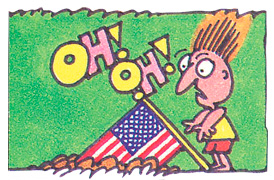
The flag must never be allowed to touch the ground, floor, water, or whatever is beneath it. When carried, it should always be held aloft and free (untangled or unbound).
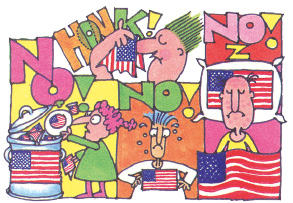
The flag should not appear on anything temporary or disposable, such as on paper napkins, tissues, boxes, and paper plates. It should not be embroidered on items easily soiled, such as cushions or handkerchiefs. It should never be used as clothing, bedding, or curtains.
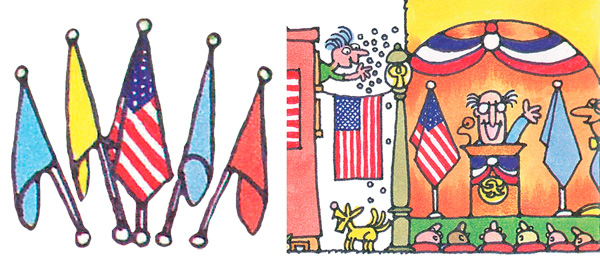
If displayed or carried with other flags at the same height, the U.S. flag should be placed on the observers left. In a fan-shaped group, it should be in the center. In peacetime, it should be displayed at the same height as flags from other countries. The canton, or blue field, should be at the top on the observers left when the flag is displayed inside a building or against a solid background such as a wall. Outdoors, the flag should be flown horizontally or hung vertically with the canton to the observers left, north, or east. On a speakers platform, it should either be horizontal, above and behind the speaker, or on a staff to the speakers right.

A flag is flown at half-staff to show a time of mourning for certain deceased persons, such as elected officials or military personnel, or for a national disaster. A flag is sometimes used to drape the casket of a notable American and military veterans. The blue canton should be placed on the casket over the bodys head and left shoulder. Before the casket is lowered into the grave, the flag should be removed, folded properly, and offered to the next of kin.
